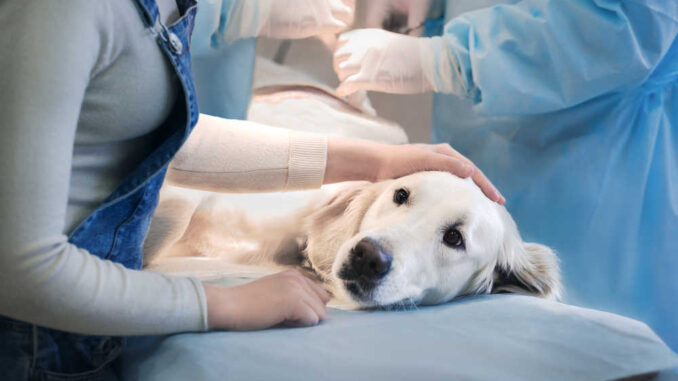
This article was updated on January 24th, 2024
Your dog has just had surgery, and you are anxiously watching them for any sign of complication. You want their recovery process to be as smooth and comfortable as possible. But what should you do if you notice a lump at your pet’s incision site?
What are incision lumps in dogs?
An incision lump after surgery is a possible side effect of surgery for some dogs, and may be due to several underlying factors, ranging from mild to severe. It’s important to know when an incision lump is normal or not. In this article, our veterinarian Dr. Liza Cahn explains what is normal, and when to worry.
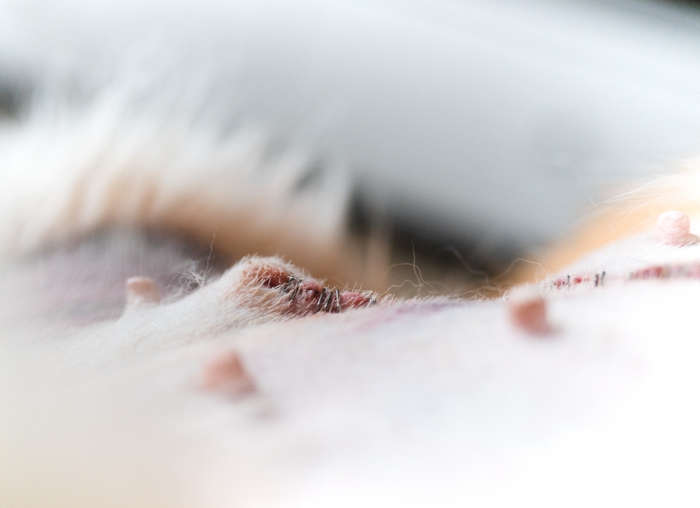
Should I worry about an incision lump?
A small firm lump at the incision site may be part of the normal healing process. In this case:
- Signs are minimal
- No apparent discomfort, redness, or discharge
- Incision lump will usually resolve without treatment within two weeks: if a lump persists or increases in size, your vet may recommend a physical exam to rule out some of the other causes listed later in this article.
Pictured below is a normal lump at the incision site with no unusual redness, discharge or bleeding:
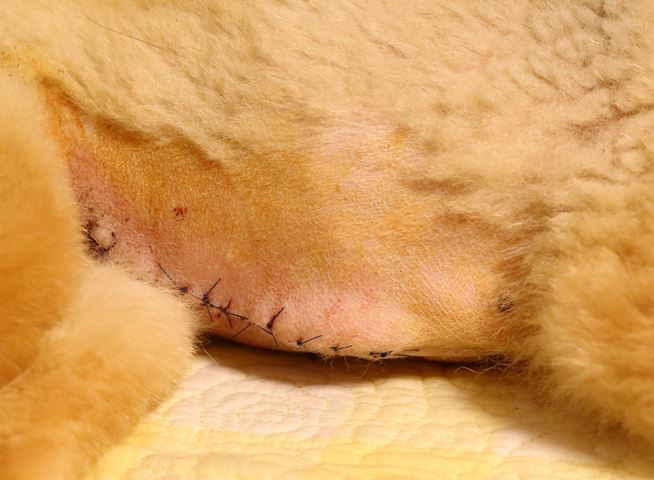
Pictures of normal incision lumps after a surgery (overview)
What does a normal healing scar look like vs. one that may require veterinary attention?
Normal incision or scar: In the first few days, it is normal to see some bruising, redness, and mild swelling that seems to be improving over 3-4 days, as shown in the picture below.
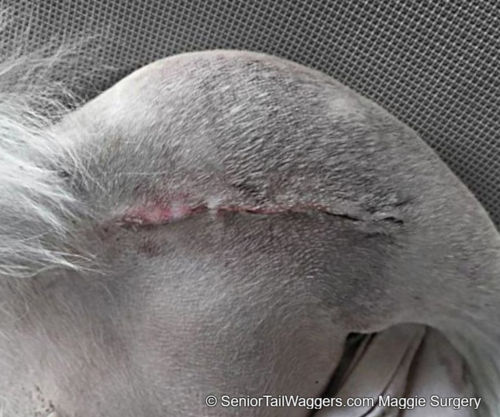
A normal surgery incision in a dog a few days after surgery typically appears as a clean, closed line with minimal swelling, and it may have a small lump or swelling at the incision site, which is a normal part of the healing process.
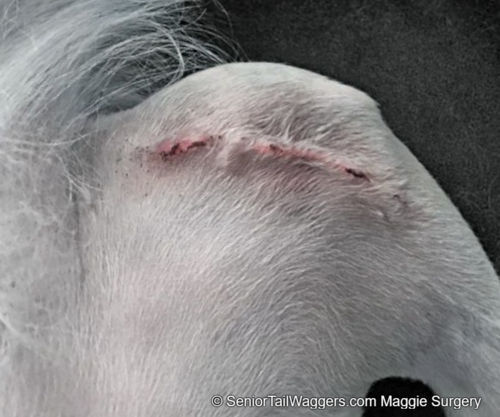
View more pictures of normal surgery incisions and scars
What you should do if you are worried about an incision lump
While a small firm lump at an incision site may be part of the normal healing process, it is always best to contact your vet with any concerns:
- Email your clinic a picture of the incision. Your vet will share initial feedback about whether you can continue to monitor your dog at home or if a vet visit would be recommended.
- Double-check that you are following your vet’s instructions for caring for your pet after surgery. Providing appropriate pain control, using an E-collar to prevent licking, and restricting activity are extremely important ways to help your pup heal faster and without complication.
Contact your vet if you notice:
- excessive or worsening redness or swelling,
- discharge,
- bleeding,
- foul odor,
- an incision that is opening up,
- uncontrolled pain, or
- other signs of illness such as fever, lethargy, loss of appetite, vomiting, diarrhea, weakness, collapse, pale gums, difficulty urinating, or difficulty breathing.
View pictures of abnormal or infected incisions
When to worry – other causes of incision lumps
Suture reaction
Your veterinarian will use suture material to close the incision in several layers.
A suture reaction occurs when the body perceives the suture material as a foreign object and mounts an immune response against it. This may occur soon after surgery or weeks/months later as the absorbable suture is dissolving.
There are many different types and sizes of sutures; however, most vets use a suture that will dissolve slowly over time, will not be visible externally, and will not have to be removed. If your dog has a different type of sutures, it may be closed with external sutures or staples.
This can result in a hard lump, which may be localized (usually at one or both ends of the incision where knots have been placed beneath the skin) or extend the length of the incision. The lump may or may not be tender. In some cases, it may become infected. If you see suture sticking out of your dog’s incision, don’t try to pull on it, instead contact your vet for their recommendations.
Treatment may involve monitoring, anti-inflammatory medications, or in some more severe cases, removing the excess suture material and administration of antibiotics.
Infection
Infection can lead to the formation of painful, warm, lumps at an incision site (View pictures of incision infections & vet advice). Infected incisions may be
- red,
- swollen,
- crusty,
- ooze pus or blood, and
- have a foul odor.
In severe cases, a dog may also show systemic signs of illness such, as:
- fever,
- lethargy, and
- loss of appetite.
Infection can occur due to licking or chewing at the area after surgery, a preexisting skin infection at the surgery site, a breach in sterile technique during surgery, or a variety of other reasons.
View pictures of incision infections
Diagnosis of an infection starts with a physical exam. Your vet may also collect a sample of the discharge to culture and identify the type of bacteria causing the infection. Most incisional infections will resolve with a course of appropriate antibiotics, however, in some cases, a dog may require another surgical procedure so that the wound can be cleaned, debrided, and repaired. Using an e-collar to prevent licking and keeping your dog calm and quiet for 10-14 days after surgery is the best way to help prevent an infection from developing.
Seroma
A seroma is a collection of fluid under the skin, that most often occurs after surgery due to the body’s normal healing response or excessive movement in the area. These fluid-filled lumps are soft and non-painful and contain a serous (clear) fluid if aspirated (drawn out) with a needle.
Small seromas should resolve on their own without treatment within a couple of weeks. Rest and application of warm compresses can help speed up the process of fluid resorption. If the seroma is large, your vet may recommend draining the fluid.
Scrotal hematoma
Hematomas are collections of blood within the tissue, which can occur if a blood vessel is damaged during surgery or if a dog is too active post-surgery. A scrotal hematoma is specific to neuter surgeries and involves swelling of the scrotum due to bleeding.
This is most commonly seen in older, intact male dogs. Hematomas often appear as painful, swollen, and sometimes discolored lumps. Excessive bleeding or hematoma formation at an incision site could also be a sign of an underlying bleeding disorder.
Diagnosis usually involves a physical exam, and in some cases, your vet may aspirate (sample) the lump to confirm the presence of blood. Treatment may involve draining the blood, strict rest to allow the body to heal, or in severe cases, surgical intervention such as a scrotal ablation.
Hernia
A hernia is the most serious cause of a lump at the incision site after surgery. A hernia occurs when there is a protrusion of an organ or tissues through an abnormal opening (in this case, an incision site). It appears as a soft lump that may change in size. It may be painful, especially if it becomes strangulated (the blood supply is cut off), which is a medical emergency.
Diagnosis involves a physical exam and possibly imaging such as x-rays and ultrasound. The treatment will be another surgery to repair the hernia.
Learn more about spay and neuter surgery lumps.
Veterinary care
Likely treatment plan and costs
When you see your vet for a lump at a surgical incision, they will first perform a physical exam. They may then recommend additional testing depending on the appearance of the bump and any other clinical signs that your dog is experiencing. Prices vary widely based on numerous factors, including your location, your dog’s size, and the underlying issue. The price ranges listed below are based on the author’s anecdotal experience in the field.
- Cytology ($50) – Sampling cells and fluid can help your vet determine if it is due to infection or inflammation.
- Culture ($200) – In cases of incisional infection, a culture may be recommended to determine the type of bacteria present and help your vet choose the best antibiotic for treatment.
- Bloodwork ($100-300) – Screening bloodwork is generally recommended to evaluate your dog’s overall health and major organ function prior to any surgery. Your vet may recommend repeating bloodwork or performing additional blood tests to look for signs of bleeding or clotting disorders.
- Imaging ($150-500) – Imaging such as x-rays and ultrasound may be used to diagnose a hernia.
Treatment will depend on the underlying cause and may include:
- Strict rest
- E-collar
- Medications ($50-200) – such as antibiotics and anti-inflammatories
- Surgery – to remove sutures, repair a hernia, perform a scrotal ablation, or place a drain to treat a large seroma
How can I prevent lumps after a surgery?
In some cases, there is nothing you can do to prevent an incisional lump in your dog after surgery. However, it is extremely important to follow your vet’s follow-up care instructions regarding medications, the use of an E-collar to prevent licking, and strict rest during the healing process. If a dog is too active after surgery or is allowed to lick at their incision, the chances of infection and other complications greatly increase.
Frequently asked questions
How long does it take for incision lumps to resolve?
This depends on the underlying cause. Lumps associated with the normal healing process, small seromas, or mild suture reactions may resolve on their own within two weeks’ time. If a lump is getting larger, appears infected, or is causing issues for your dog, it will likely need veterinary attention.
Can incision lumps be cancerous?
If your dog has undergone a mass removal surgery, it is possible that a lump at the incision site could indicate the regrowth of cancer. However, in most cases, lumps at surgical incisions are not cancerous in nature.
Can suture reactions lead to complications?
Yes, suture reactions can become infected and thus lead to complications if not addressed by your vet.
Are certain dog breeds more prone to these issues?
Dogs who are young, active, and anxious, may be more difficult to keep calm and quiet after surgery. If this sounds like your dog, speak with your vet prior to surgery and come up with a plan. This may include the use of sedatives or other medications. In addition, certain breeds such as Doberman Pinchers, are predisposed to bleeding disorders such as Von Wildebrand’s Disease. Lastly, complex surgeries can take longer and require larger incisions, thus may have an increased risk for potential complications. Your vet will discuss the surgery, follow-up care, and potential complications with you prior to proceeding.
Related posts about incisions:
Disclaimer: This website's content is not a substitute for veterinary care. Always consult with your veterinarian for healthcare decisions. Read More.


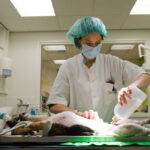
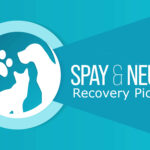
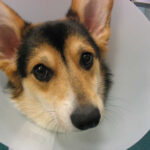
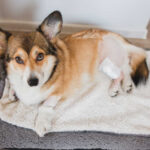
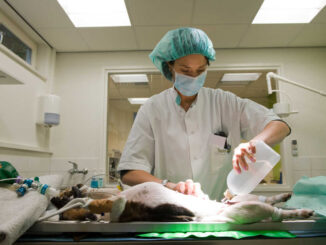
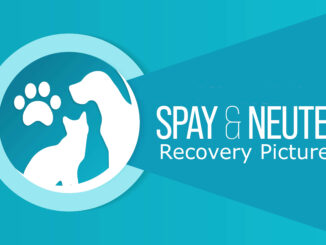
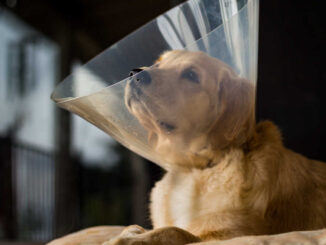
Be the first to comment